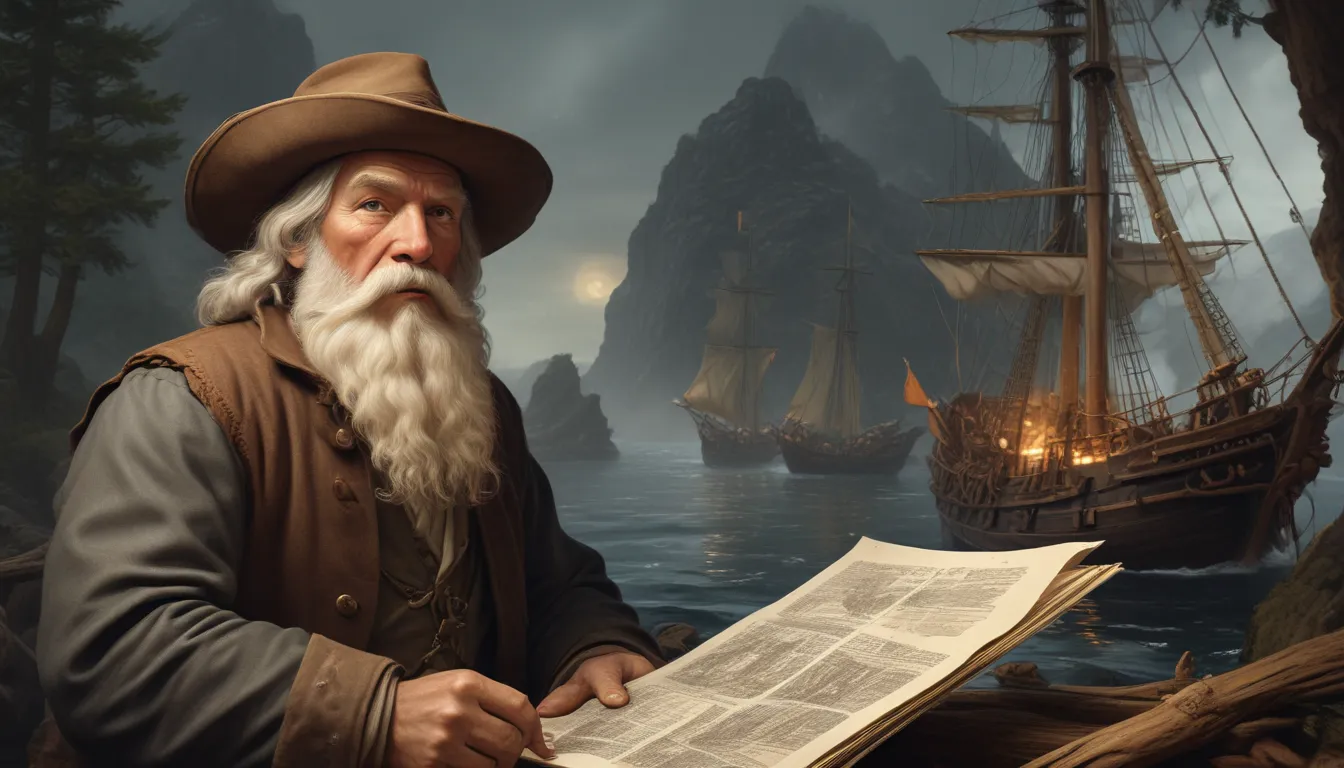The images in our articles may not match the content exactly. They are used to grab your attention, not to show the exact details in the text. The images complement the text but do not replace it.
Welcome to the captivating world of John Cabot, a remarkable 15th-century explorer whose daring voyages reshaped the map of the known world. From his humble beginnings in Italy to his legendary explorations along the eastern coast of Canada and North America, John Cabot’s legacy continues to inspire awe and admiration. Join us on a journey through 18 fascinating facts about John Cabot that will impress even the most avid history enthusiast!
Origins of a Pioneer Explorer
Let’s begin by delving into the early life of John Cabot, born Giovanni Caboto in Genoa, Italy, around 1450. Despite his Italian heritage, it was under the banner of the English flag that Cabot made his indelible mark on history as an intrepid explorer.
Embarking on a New Chapter in Venice
In the early 1470s, Cabot made a pivotal move to Venice, where he was granted citizenship in 1476. This strategic decision exposed him to Venice’s vibrant maritime traditions, laying the groundwork for his future endeavors.
From Merchant to Explorer
Before venturing into the uncharted waters of exploration, Cabot followed in his father’s footsteps as a merchant. His trade in spices and jewels took him to distant lands in the Middle East and Africa, honing his skills as a seasoned traveler.
A Fateful Move to England
In 1495, facing financial challenges, Cabot relocated to England, settling in the bustling maritime hub of Bristol. This strategic move would set the stage for his epic voyages of discovery across the Atlantic.
Inspired by Great Explorers
Driven by the exploits of Christopher Columbus, Cabot set his sights on finding a more direct route to Asia by sailing west across the North Atlantic. His ambition to chart new territories fueled his determination to explore uncharted lands.
Setting Sail on the Matthew
In May 1497, aboard the small ship Matthew, Cabot embarked on his iconic voyage from Bristol with a crew of just 18 sailors. The Matthew would carry him to the shores of a new continent, forever altering the course of history.
Landing on North American Shores
On June 24, 1497, John Cabot made landfall on the coast of North America, a momentous occasion shrouded in historical debate. The exact location of his landing, whether Newfoundland, Cape Breton Island, or Maine, remains a topic of scholarly discussion.
Staking a Claim for England
Upon reaching North America, Cabot boldly claimed the land for King Henry VII of England, becoming the first European explorer to assert English sovereignty over parts of the New World.
Pioneering English Exploration
Cabot’s 1497 voyage marked the inaugural English-sponsored expedition to the New World, predating the famed journeys of renowned explorers like Sir Walter Raleigh and Captain James Cook by more than a century.
Royal Recognition and Rewards
Upon his return to England, Cabot was duly rewarded by King Henry VII with an annual pension of £20, a significant honor in recognition of his groundbreaking achievements in exploration.
The Ill-Fated Second Expedition
Undeterred by challenges, Cabot undertook a second voyage in 1498, leading a fleet of five ships with the ambitious goal of discovering Japan. However, the voyage was fraught with difficulties, ultimately culminating in his mysterious disappearance at sea.
Legacy of Exploration and Colonization
John Cabot’s voyages laid the foundation for English claims to North America, setting the stage for subsequent waves of English colonization in the 17th century. His pioneering spirit paved the way for future explorers and colonizers to chart new horizons.
Commemorating a Legacy
In 1897, the Cabot Tower was erected in Bristol to honor the 400th anniversary of Cabot’s historic voyage. This iconic landmark serves as a lasting tribute to his enduring legacy and contributions to world exploration.
Impact on Indigenous Populations
While Cabot’s expeditions opened new frontiers for European exploration and colonization, they also had profound consequences for Native American populations, ushering in a period of dramatic upheaval and cultural transformation.
The Cabot Trail and Codfish Discoveries
The Cabot Trail, a scenic highway in Nova Scotia, Canada, pays homage to John Cabot’s legacy, winding through picturesque landscapes associated with his explorations. His discoveries of abundant codfish in the North Atlantic sparked a lucrative industry that would shape the future of England and New England.
Remembering a Trailblazing Explorer
Today, John Cabot is celebrated as one of the pioneering European explorers of North America, whose bold expeditions paved the way for future adventurers. His courage, vision, and spirit of exploration continue to inspire generations, leaving an indelible mark on the annals of history.
Conclusion
In conclusion, John Cabot’s indomitable spirit and unwavering determination propelled him into the annals of history as a trailblazing explorer whose legacy endures to this day. His daring voyages into uncharted waters reshaped the world map, opening up new opportunities for exploration, trade, and colonization. As we reflect on his extraordinary life and achievements, let us honor his memory and celebrate the enduring legacy of a true pioneer in the age of exploration.
Was this article helpful? Your engagement and contributions are what drive our commitment to delivering accurate and engaging content. Join us on a fascinating journey of discovery as we uncover the remarkable stories of history’s influential figures. Trust in our dedication to quality and authenticity as we explore the wonders of the past together.






